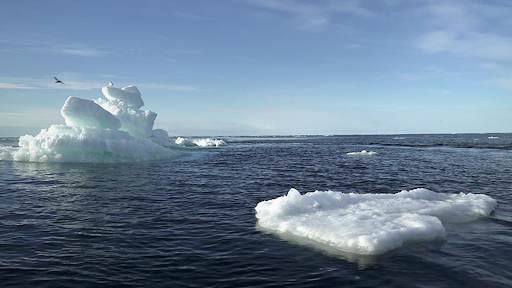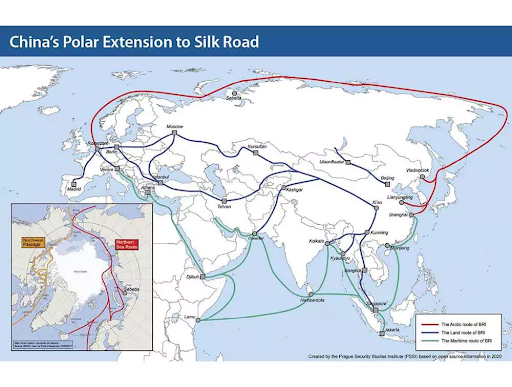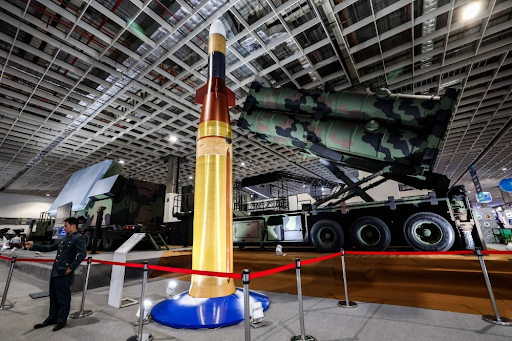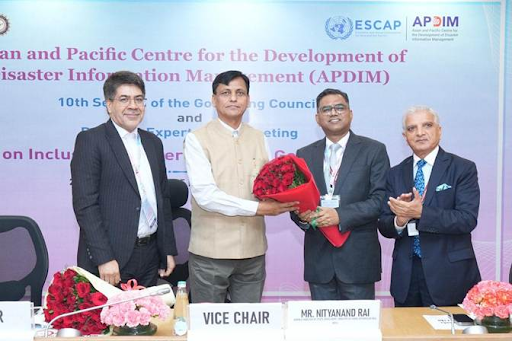



India's Arctic engagement addresses climate, trade, and strategic concerns. Melting ice opens the Northern Sea Route, aiding Indian trade and energy access. Arctic changes impact monsoons and glaciers. India boosts research, shipbuilding, and diplomacy to counter China-Russia influence, promote sustainability, and protect national interests through its Arctic Policy and global partnerships.

Copyright infringement not intended
Picture Courtesy: THE HINDU
Context: India’s engagement in the Arctic region holds strategic, scientific, and environmental significance.
Climate Change Opens New Doors
The Arctic is warming four times faster than the global average. NASA reports that Arctic sea ice shrinks by 12.2% every decade compared to 1981–2010 levels. In 2024, global temperatures crossed 1.5°C above pre-industrial levels, signaling a climate crisis.
The melting ice creates the Northern Sea Route (NSR), a shorter shipping path between Europe and Asia. This route cuts travel time and costs compared to traditional paths like the Suez Canal. For India, the NSR can boost trade by reducing shipping costs and fuel use.

Experts call the Arctic a “canary in the coal mine” for climate change, meaning it warns us of global dangers but also offers trade and resource opportunities. India, as the world’s third-largest energy consumer, wants access to Arctic oil, gas, and minerals like copper and rare earths to meet its growing needs.
Climate Links to India
The Arctic affects India’s climate. Melting ice disrupts weather patterns, impacting the Indian monsoon, which supports agriculture and feeds millions. Research shows Arctic ice loss can weaken monsoons, threatening food security.

India’s Himalayan glaciers, called the “third pole,” face similar melting issues as the Arctic, raising risks like floods. Studying the Arctic helps India predict these changes.
Geopolitical Stakes
The Arctic is a hotspot for global powers like Russia, China, and the US. Russia controls much of the NSR, while China pushes its “Polar Silk Road” to dominate Arctic trade.
India wants a voice in this region to secure its interests and counter China’s growing influence. India’s concern about China bypassing the Malacca Strait, a key trade chokepoint.
What India Is Doing in the Arctic?
India has been active in the Arctic for decades:
India’s National Centre for Polar and Ocean Research (NCPOR) in Goa leads these efforts, studying Arctic ice, glaciers, and their impact on India’s monsoons. In 2024, Indian institutes partnered to model how Arctic changes affect agriculture, showing India’s commitment to science.
Investments India Needs
To seize Arctic opportunities, India must invest in:
Geopolitical Challenges and Partnerships
The Arctic is a chessboard of global powers, and India must play smart:
India’s 35% share of cargo at Russia’s Murmansk port in 2023 shows its growing NSR role. But aligning too closely with Russia might pull India into China’s orbit, so diplomacy is key.
Way Forward
The 2025 Arctic Circle India Forum is a chance to pitch India’s vision and build ties with Arctic nations.
Study Arctic-monsoon links to protect agriculture and predict floods.
Use the $3 billion fund to create icebreakers and Arctic-ready ports.
Partner with Japan, South Korea, and Nordic countries to counter China-Russia dominance while maintaining Russia ties.
Push for green tech and conservation in the Arctic Council to show India as a responsible player.
Must Read Articles:
Exploring India's Potential in the Arctic Region
Source:
|
PRACTICE QUESTION Q. Which of the following countries border the Arctic Sea? 1. Norway 2. Canada 3. Denmark 4. Germany Select the correct answer using the codes given below: A) 1, 2, and 3 only B) 1 and 3 only C) 2 and 4 only D) 1, 2, 3, and 4 Answer: A Explanation: The Arctic Ocean is bordered by eight countries: Canada, Denmark (via Greenland), Iceland, Norway, Russia, Sweden, Finland, and the United States. The Arctic Ocean is the world's smallest ocean, and the Arctic region includes land, territorial seas, internal waters, exclusive economic zones (EEZs), and international waters. The Arctic Council is an intergovernmental forum that promotes collaboration between these countries.
|







© 2025 iasgyan. All right reserved